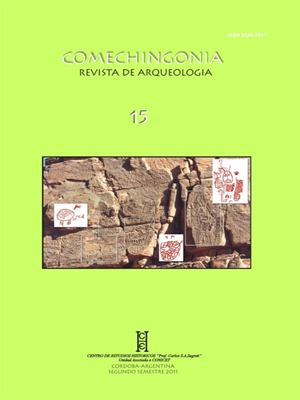Huellas de aserrado perimetral sobre restos óseos humanos. El caso del sitio Cerro Lutz, provincia de Entre Ríos
Main Article Content
Abstract
In this paper we present two human bone fragments which were intentionally modifi ed by means of sawing in the perimeter. Both items came from the Cerro Lutz archaeological site, which is result of hunter-gatherer groups that inhabited the Low Paraná wetland during the last 2500 14C years (Late Holocene). Although sawing int the perimeter of bones is a technique widely represented in most archaeological sites of Low Paraná wetland, it has only been identifi ed on faunal remains until now. The major aim of this work is to discuss the possible behaviors linked to these fi ndings trough other archaeological evidences, and to propose some hypotheses, considering that this is a record practically unknown in the study area. In that sense, we made different interpretations to assess, for example, if these artifacts, besides of being part of the technological system, have other association or special connotation linked to mortuary practices.
Downloads
Article Details
Section
Artículos
COPYLEFT
This work is licensed under a Creative Commons Attribution-Share Alike 4.0 International License.
COPYRIGTH
The copyright and copyrights of the articles are held by the authors themselves.
This will be indicated in each article, as well as the Copyleft license described above.
How to Cite
Huellas de aserrado perimetral sobre restos óseos humanos. El caso del sitio Cerro Lutz, provincia de Entre Ríos. (2011). Comechingonia. Revista De Arqueología, 15(1), 155-169. https://doi.org/10.37603/2250.7728.v15.n1.17955




